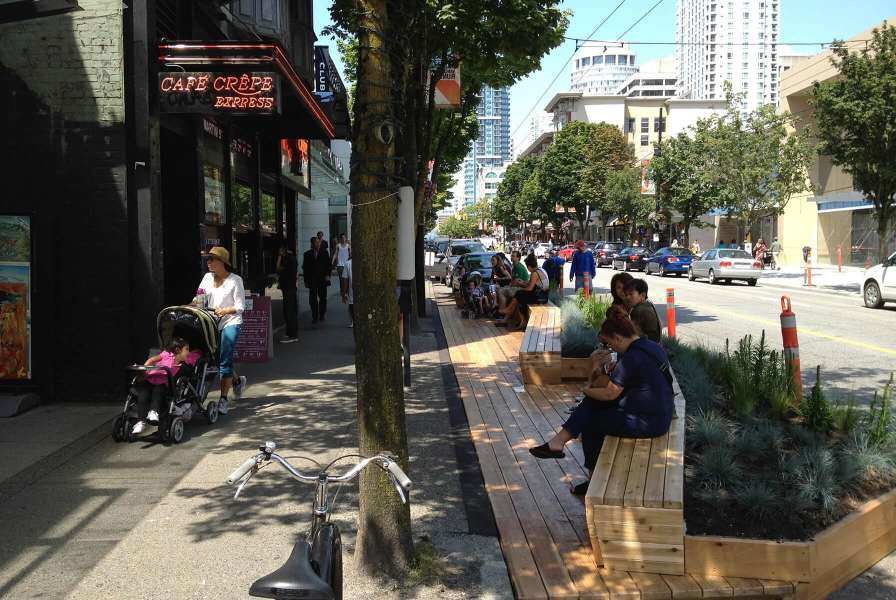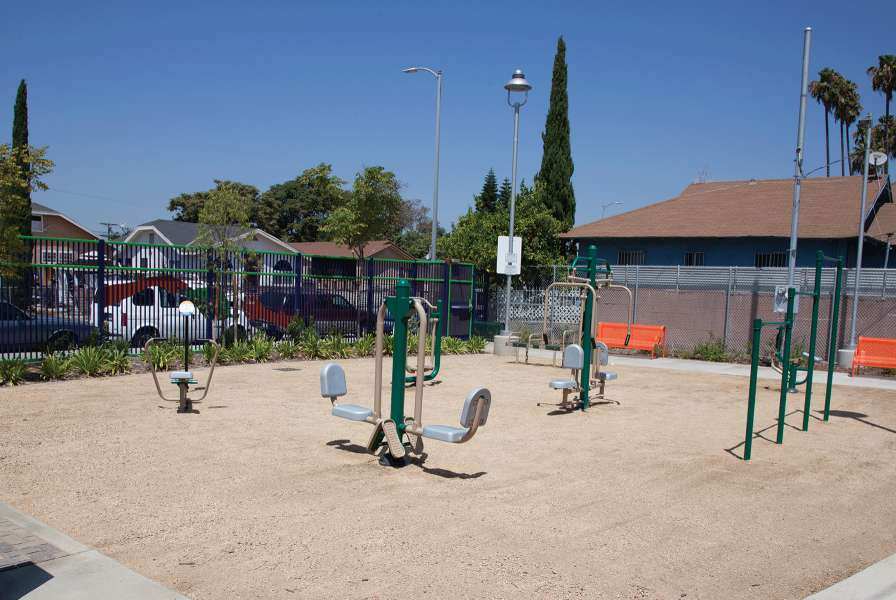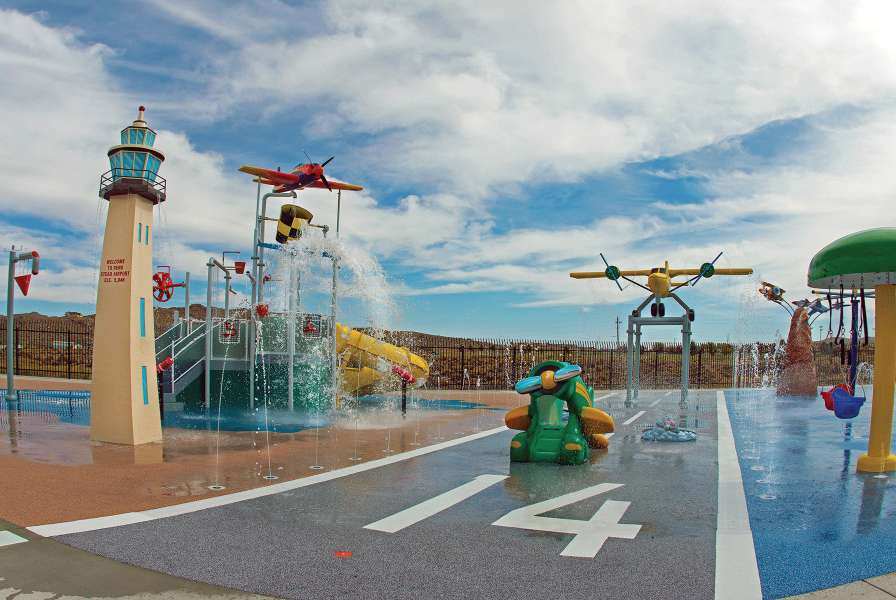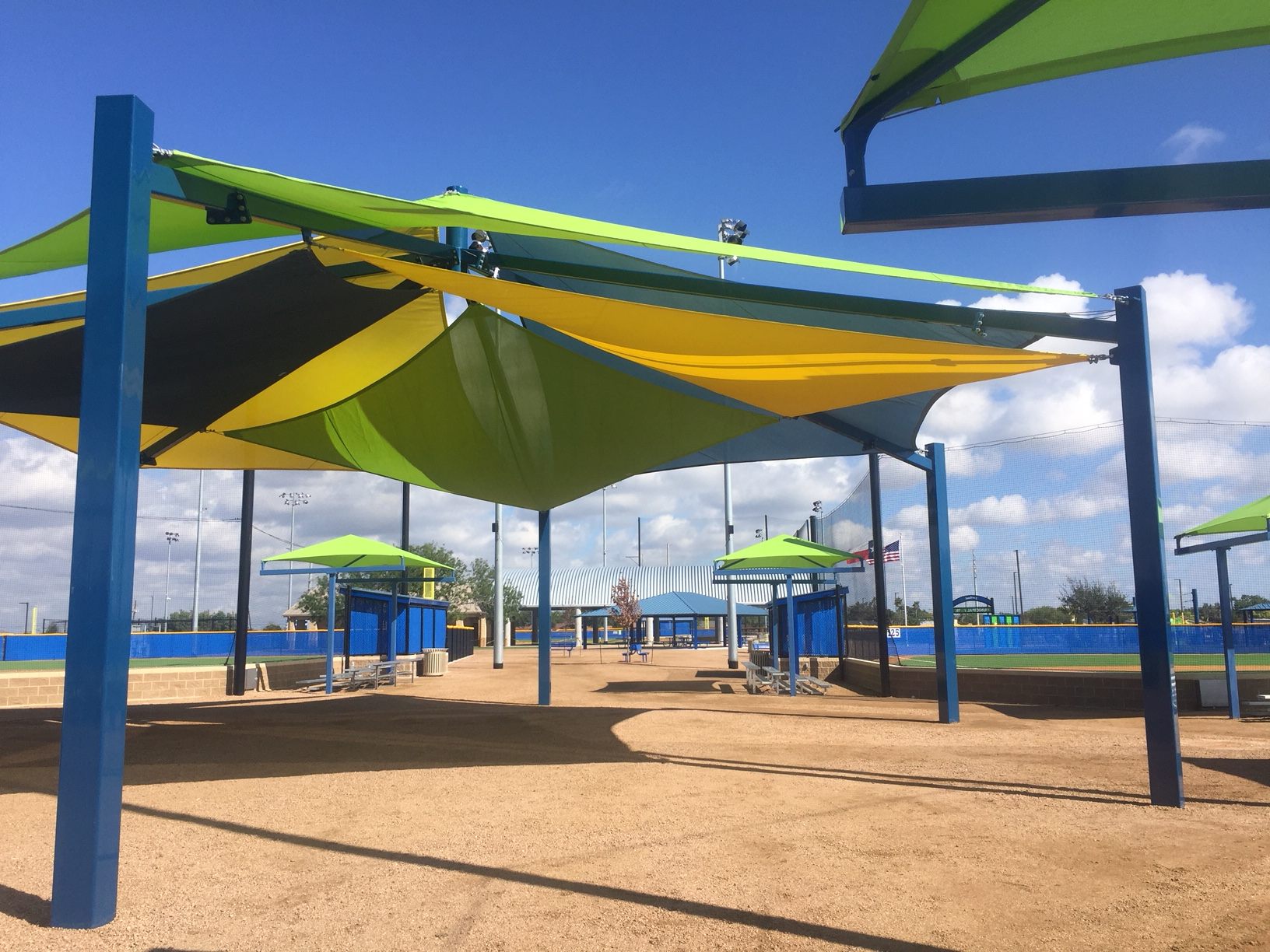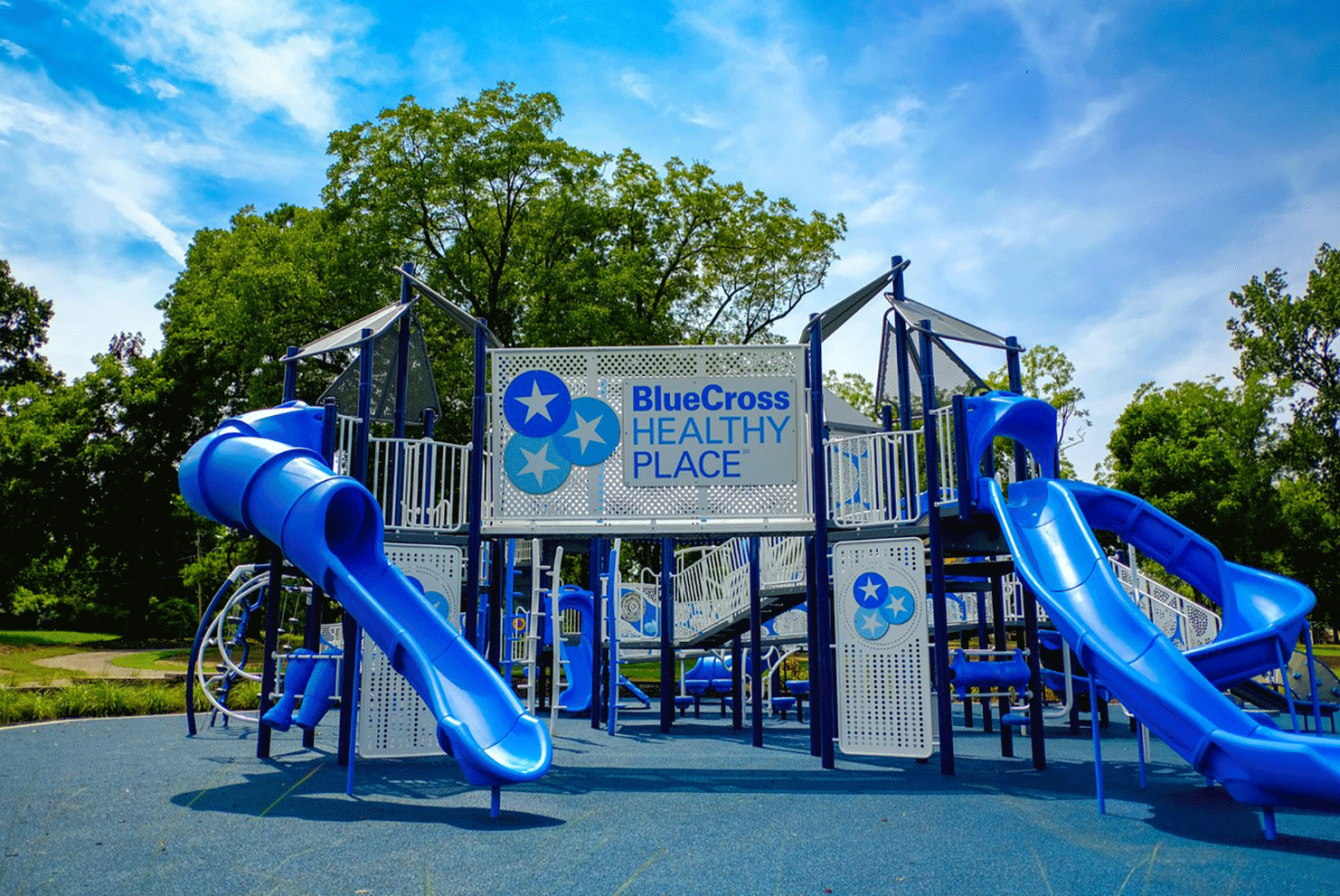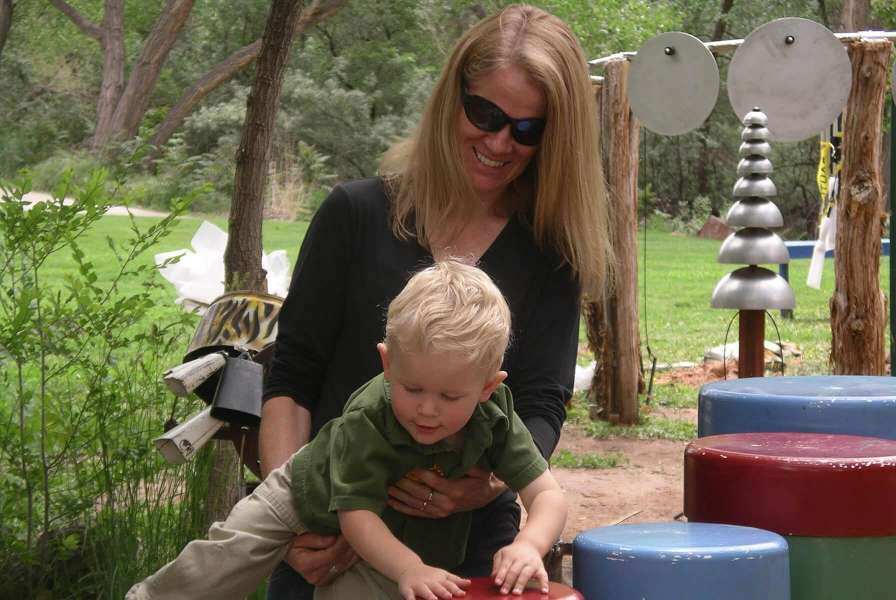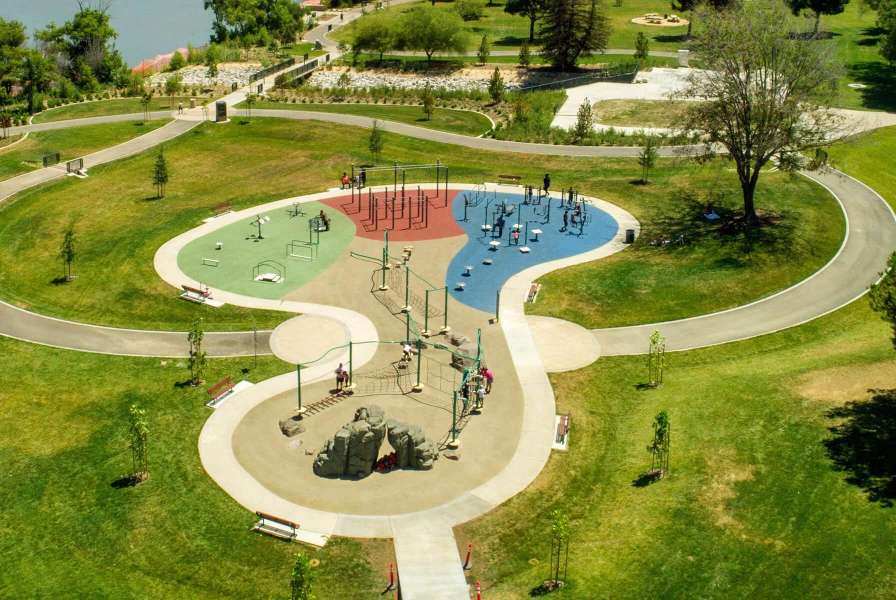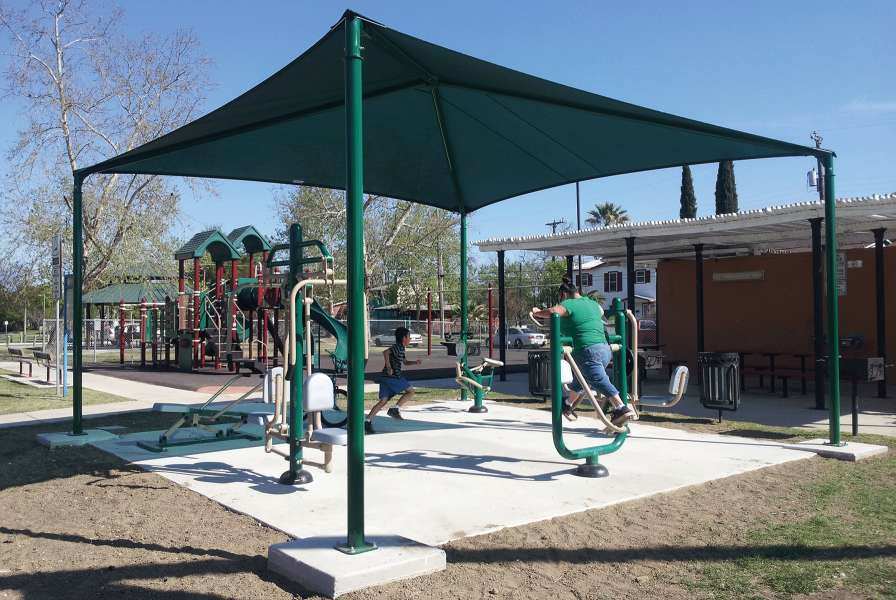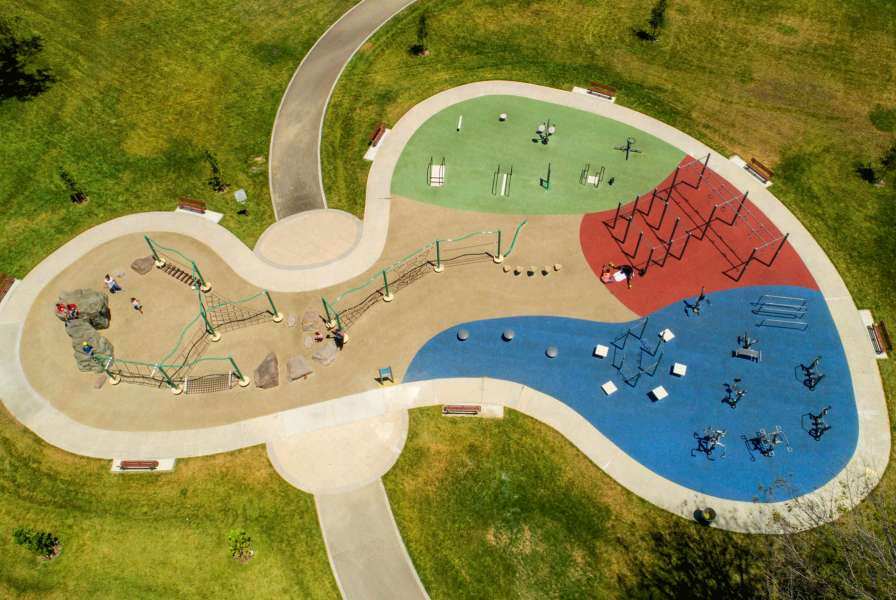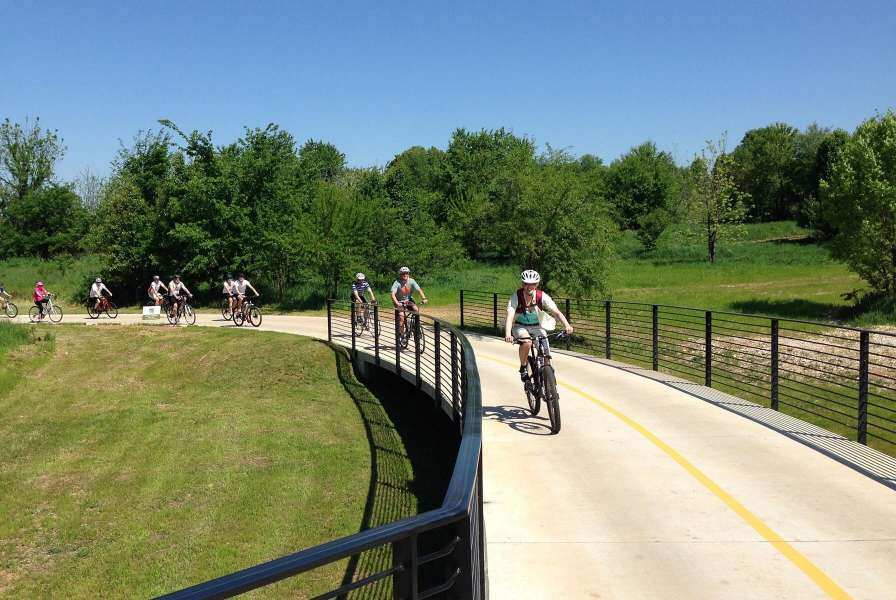Vancouver, BC is a Canadian city of over 2.5 million people. Its amazing cultural diversity, importance as a port for world trade, and the vast sea, mountain, and forest recreation opportunities surrounding the city has resulted in steady growth and a heavy tourist industry. With the city growing up, not out, new areas for parks within the urban center of the city are not usually an option. To address this, and to provide more park-like environments within the urban structure, the city is turning to parklets. A parklet is typically a small, sidewalk-scale open space that repurposes a curbside lane or parking spot. Created by building an extended and/or raised platform over the space, parklets can include nature elements, fitness and play opportunities, benches, tables, chairs, landscaping, and bike parking.
They serve a variety of purposes, including providing places for people to relax, and expanding sidewalks for walking where streets are narrow or congested. Since sidewalks and streets make up a large part of a city's overall land area, they are an integral part of the daily experiences. Since may sidewalks were narrowed during the 20th century to make room for autos, often people are left with crowded sidewalks with no space for stopping and resting. Since many city dwellers need to travel great distances to enjoy a park, play area, or other public space, parklets provide opportunities for urban communities to create small, important spaces right in their neighborhood. Today, building a parklet is easy, as they can be purchased as a modular kit, with the ability to build to suit and add features like side rails and/or cablingto denote the space boundaries and promote safety. With this infrastructure in place, the amenities and art at a parklet can be created to reflect the diversity and creativity of the business and people who build, support, and use them. They also reflect a community's commitment to walking, bicycling, and strengthening connectivity.
Vancouver tested the effectiveness of parklets in a pilot program over several years before the City Council officially approved the Parklet Program. The purpose of the initial program was to understand how parklets would be received and used, and whether the program should be implemented on a permanent basis. Business owners, community organizations, and parklets under the pilot. If approved, each applicant was tasked with covering the cost of designing and installing the parklets, documenting community support, and maintaining parklets on a regular basis. Under the pilot, three more parklets were built for a total of six.
Upon evaluation of six parklets, they were found to be well-used, well-maintained, and supported by both owners and users. The data collection process included visiting the parklets to track behavior mapping and length of stay, seeking input from both the public and businesses in a survey, and assessing the cleanliness and upkeep of the parklets.
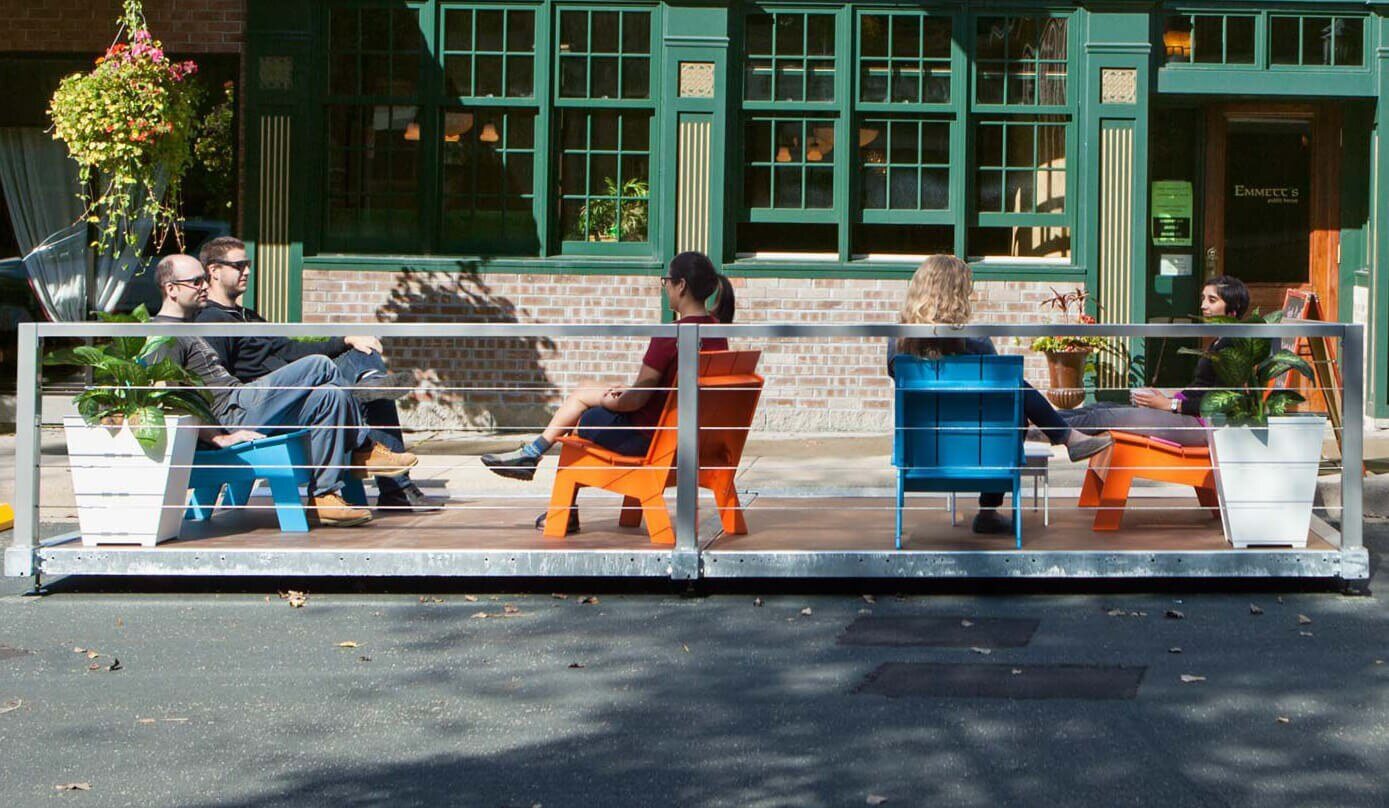
The survey responses indicated that people found the parklets to be an element in making streets more vibrant and fun. One of the most important reasons, as indicated by the people surveyed,was that they add a social element where people can meet, relax, and talk. People also thought the parklets added an important aesthetic value to the places they were located. It's important to note that issues of graffiti and maintenance were almost non-exisitent, with only one minor issue in each of these two areas of concern noted over the life of the pilot program.
The city also wanted to be sure that businesses had the opportunity to participate in the survey, to ensure they also has a positive view. Surveyors recorded that 13.6% of the businesses noticed an increase in business as a result of the parklet, and negative impact was minimal, as only 6.2% of businesses noted the effect. The most common response of these was lack of a parking space. Nearly 65% of businesses noted that the parklet had made their neighborhood a better place.
One of the most important lessons learned had to do with people's familiarity with the concept of parklets. Many did not realize that parklets were a public/no-purchase necessary space, and were delighted to learn that this was the case. In addition, the most frequently mentioned suggestion was the addition of more parklets throughout Vancouver, which indicates they have a promising future, not just in Vancouver, but in urban environments worldwide People also noted the desire for additional improvements, like more seating and shade structures over the parklet to provide protection from weather elements.
The parklet is an innovative way to build public gathering spaces right in the heart of the urban streetscape. Businesses and organizations with limited sidewalk space now have the unique ability to extend their atmosphere and aesthetic to the outdoors. Parklets are an important tool in supporting local businesses, enlivening he city streets, and attracting non-motor driven traffic like cyclists and pedestrians. Parklets are often located near bike parking, and bike parking can be incorporated into the parklet as an element of convenience to attract cyclists to the space.
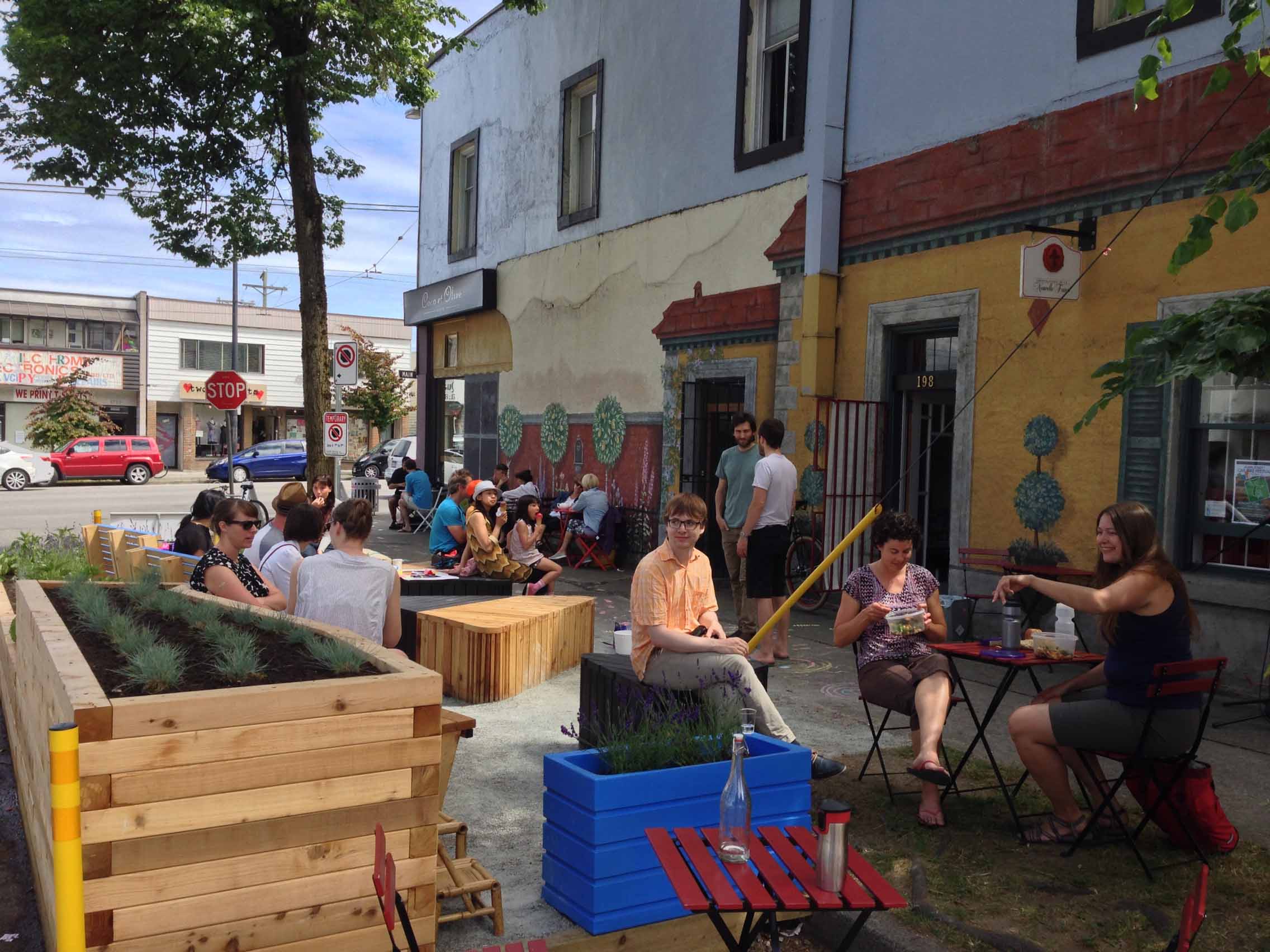
"With the addition of [parklets] we're brining yet another innovative approach of people-oriented public space to neighborhoods." Darrell Mussatto, Former Mayor North Vancouver, BC
This case study and other bike-related case studies can be found in our Shift Into Gear® guidebook.
This article is from Shift Into Gear: A Bicycling Advocacy Resource.
Photo Credits: Paul Krueger & Dero
